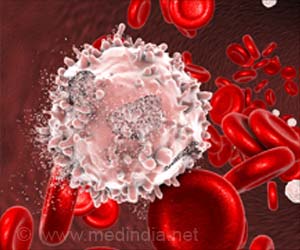A newly identified group of proteins may play an important role in cell signaling that is crucial to new drug development, say researchers. The study appears in PLOS ONE.

Once a cell's G protein-coupled receptor binds with a natural ligand or a drug, intracellular G proteins and beta arrestins independently mediate various signals. Immediately following, beta arrestins block further signaling of G proteins and recruit proteins to remove the receptor to halt cell signaling. Those receptors can subsequently recycle to the cell surface or be destroyed.
"Receptor down regulation caused by beta arrestins can interfere with drug efficacy because the G protein-coupled receptor that the drug has been targeting is absent from the cell surface," said Carlos E. Alvarez, PhD, principal investigator in the Center for Molecular and Human Genetics at The Research Institute at Nationwide Children's Hospital and lead study author. "This is why patients who are prescribed long-term medication can become drug-tolerant and require higher and higher doses."
In some cases, a drug's ability to trigger beta arrestin effects and block G protein signaling is preferential. Take beta blockers, for example. As the name suggests, beta blockers interfere with the binding to the receptor for epinephrine and other stress hormones, weakening the hormones' effects and therefore being useful in treating irregular heartbeats, prevention of second heart attacks, hypertension and other conditions. Screening has revealed that the beta blocker Carvedilol may be the most ideal for treatment of heart conditions as it reduces the cardiotoxic effects of G protein signaling, while increasing the cardioprotective effects of beta arrestin signaling.
Yet, it seems that beta arrestins may only be part of the cell signaling story. In 2008, Dr. Alvarez discovered a subfamily of arrestins that his team named alpha arrestins. In the current study, Fortune Shea in Dr. Alvarez's lab used biochemical and imaging approaches to further identify the role alpha arrestins play in cell signaling.
He found that alpha arrestins respond to receptor binding and recruit enzymes that chemically modify the receptor to initiate aspects of down regulation. These effects occur in the first five minutes after the receptor is bound, the same time frame that beta arrestins are known to have roles in triggering down regulation. The team is also the first to find that alpha arrestins function coordinately with beta arrestins.
Advertisement
A major effort in pharmacology is to develop drugs with functional selectivity that either target G protein or beta arrestin signaling effects. Dr. Alvarez foresees alpha arrestins becoming a big player in the refining of such efforts.
Advertisement
Source-Eurekalert










